Almost finished with another Major Inspection.
Exciter has been reassembled, we’re getting closer…
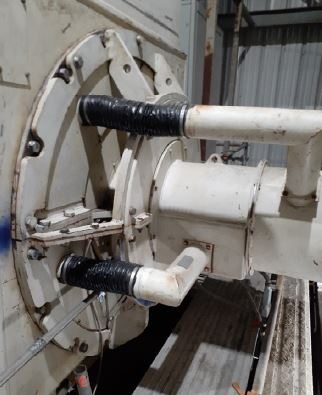
Almost finished with another Major Inspection.
Exciter has been reassembled, we’re getting closer…

Power Services Group, Inc. (PSG) was contracted to perform a major inspection on an industrial Westinghouse steam turbine generator at a paper mill in the Midwest United States. PSG arrived and began mobilization activities. The office and tool containers were off-loaded and the turbine deck set up for the outage. The set-up personnel were safety orientated for the customer’s specific safety policy before work commenced. During the project, a Safety Meeting was held prior to the start of any work. The Safety Meeting topics were based on work activities to be performed during the upcoming shift. In addition, hazardous observations which could impact the safety of the team were discussed and resolved. Prior to performing work, a Job Safety Analysis (JSA) form was completed by the work team. This project had zero accidents and zero first aid incidents.
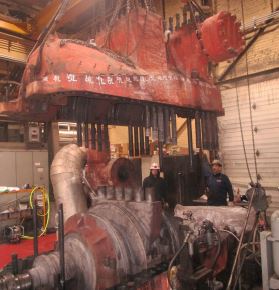
The unit was taken offline and allowed to cool down over the weekend. The outage began after Lockout / tag out (LOTO) was accomplished. The instrumentation was removed by plant E&I personnel. The V-1 and V-2 control valves were removed from the turbine casing and put on stands. The valves were disassembled and inspected and NDE was performed on the poppets and valve stems. The casing bolts and dowels were removed from the HP and LP turbine casing. An “as found” swing check was performed. The coupling TIR was recorded. The coupling bolts were removed, and the coupling separated. A 4-point face reading was recorded during disassembly. The casing was rigged and jacked up, using jack bolts, about two inches and leveled before total removal. The casing was removed and flipped to access the upper half diaphragms for removal. The thrust bearing clearance was checked before disassembly. A set of wheels and packing clearances were taken with the rotor in running position. The thrust bearing was disassembled, and the total float and strike points were recorded. A set of oil bore measurements were taken before removal of the turbine rotor.
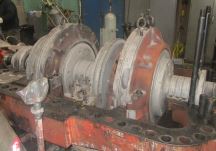
The rotor was removed and prepped for blast cleaning and staged on the turbine deck. The upper half and lower half diaphragms were removed and staged on pallets for blast cleaning. The rotor and diaphragms were blast cleaned and NDE inspected. The axial and side slips were recorded and found to be in tolerance.
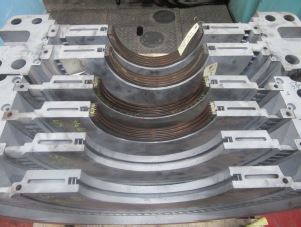
The generator field was removed from the generator stator for inspection. The electrical inspection of the generator was performed by a plant subcontractor. Some minor cleaning was performed on the stator and rotor. The generator coolers were disassembled, cleaned and vacuum tested; with no leaks found. The coolers were reassembled with new gaskets and tested before startup.
The turbine and generator bearings were cleaned and dimensionally inspected. The bearings were UT’d to check for bonding issues with the base metal. The #2 journal bearing failed NDE. A new bearing was supplied by the customer and was installed. The turbine and generator oil seals were cleaned and dimensionally inspected. The #3 inboard oil seal had excessive clearance. The oil seal was sent out for repair and final machining.
The control valves were disassembled, cleaned and inspected. The valves were blue checked upon reassembly. The trip throttle valve was disassembled, cleaned and inspected. It was blue checked during reassembly to verify proper contact. The spray chamber was disassembled, cleaned, and inspected. The lube oil pumps were removed from the lube oil reservoir for inspection. The pumps were disassembled, cleaned, and inspected. PSG rebuilt the steam driven lube oil pump. The lube oil tank was cleaned by a plant subcontractor. The lube oil coolers were disassembled, cleaned and vacuum tested with no leaks noted. The lube oil system was flushed for 24 hrs. using the existing pumps.
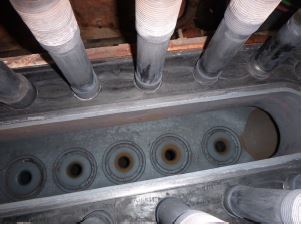
The unit was brought up and over speed tests were performed. The mechanical tripped at 3970 rpms. The electrical tripped at 3792 rpms. The unit was put online and brought up to partial load. PSG was released from the customer’s site.
We recently completed a Major Inspection on a Westinghouse Steam Turbine and Hydrogen-cooled Generator for a Utility in the Southeast U.S. The project consisted of inspecting the HP/IP Turbine, LP Turbine, and Valves. The steam path components were blast cleaned and inspected, with minor blade repairs performed on-site. The turbine rotors had boresonic inspections performed, confirming the good condition of the components. Bearings T1 – T4 were inspected and found to be in good condition. The oil deflectors were re-toothed and machined at our qualified repair facility. The Governor Valves were sent to our valve facility in Gainesville, Georgia where a flexitallic gasket modification was performed. We performed on-site machining of the steam chest to accept the newly modified gaskets. The Throttle, Reheat Stop, and Intercept Valves were all inspected at site. A laser alignment was performed to align steam path components. Final reassembly was completed, and the unit was turned over to the customer for startup. This was another excellent project where we finished on-schedule, on-budget, and most importantly – zero safety incidents. Great work by the PSG team!
 |
 |
Power Services Group (PSG) was contracted by an industrial customer in the Midwest U.S. to perform a major inspection of their Allis-Chalmers steam turbine generator.
This unit is a non-condensing steam turbine that is directly coupled to an Allis-Chalmers air cooled generator. The turbine and generator set are of a three-bearing
design.
During the project, a Safety Meeting was held prior to the start of any work. The Safety Meeting topics were based on work activities to be performed during the shift. In addition, hazardous observations which could impact the safety of the team were discussed and resolved. Prior to performing work, a Job Safety Analysis (JSA) form was completed by the work team. This project had no accidents and no first aid incidents.
The steam path components, once removed, were dust blasted and received nondestructive examination (NDE). The NDE revealed minor indications on the stationary blading, and no repairs were deemed necessary at this time. The turbine rotor and stationary stage 6 were shipped to our steam path component inspection and repair facility in Pevely, Missouri for replacement of the 7, 8, 9 and 10 rotating blades, and repairs to the #6 stationary stage.
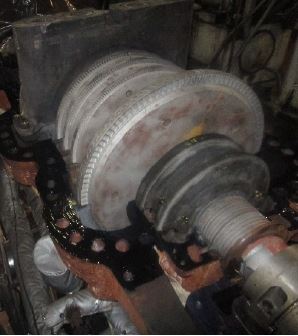
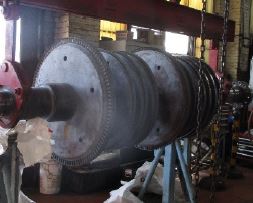
The generator field was removed from the stator and both the generator field and generator stator, received visual inspections and electrical testing. The generator field was shipped out to receive a retaining rings-off inspection. The stator was ice blast cleaned, received a re-wedge of the stator core windings, and final coated with an insulating epoxy. The journal bearings were removed and visually and dimensionally inspected and received dye-penetrant and ultrasonic testing. Inspections revealed that all of the bearings, new and in service, were in excellent condition. The pedestal oil deflectors were removed and visually and dimensionally inspected. All were found to be beyond industry standard clearance tolerances and were replaced.
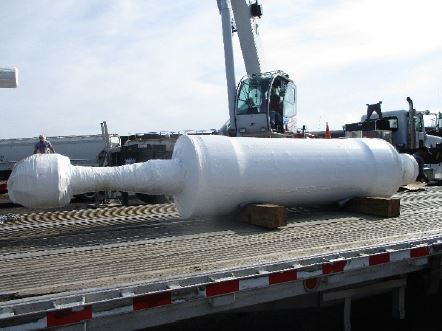
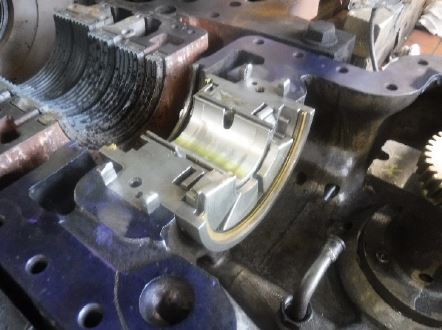
The inlet control and extraction control valve racks were removed, cleaned and visually and dimensionally inspected. The valve poppets and seats were NDE inspected and found to be in very good condition and were returned to service. Some of the valve linkage bushings and pins were found to be worn and were replaced. The trip throttle valve (TTV) and operator were removed, disassembled, cleaned, and inspected. All inspections were approved and the components were returned to service. The lube oil cooler was removed and replaced by plant personnel. The lube oil system shaft driven main and steam driven auxiliary oil pumps were removed and received inspections. The main oil pump (MOP) and the steam driven auxiliary oil pump, (AOP) were found to be in good condition and were reassembled and returned to service. The lube oil reservoir was opened by PSG and initially cleaned by plant personnel. Some sediment and sludge were found during the initial cleaning of the lube oil main reservoir. PSG performed a final vacuum and hand cleaning of the interior of the reservoir prior to the lube oil system high velocity oil flush (HVOF). A lube oil system HVOF was performed utilizing an external pump and heating/filtering skid. The flush was ran for approximately 72 hours and was completed once system cleanliness was acceptable.
The system trip devices were inspected, cleaned and flushed; all linkages were checked for wear and proper freedom of movement. The mechanical over speed trip test was completed after initial startup and the unit was later tied on-line. PSG personnel demobilized the job site and were released to travel after another successful project startup.
Zero safety incidents, quality work, Nice job team!
We recently executed a Major Inspection on a GE G-3 Steam Turbine rated over 750 MW for a major Utility company in the U.S. This type of project is long and detail-oriented. The attention to safety each and every day must be at the forefront of every project, but especially one of this magnitude. There are a lot of moving parts on the schedule throughout the outage, so continuous updates and excellent communication and documentation is required to keep the project on-schedule through completion. For this project we had an excellent project management team on-site, including the Technical Field Advisors, Project Coordinator, Turbine Mechanic Foreman, and Turbine Mechanics. The experience of the team on-site can make or break the success of an outage. We are fortunate to have great outage teams, and they did an excellent job completing this project safely, with high-quality, on-schedule, and on-budget. Nice job PSG team!
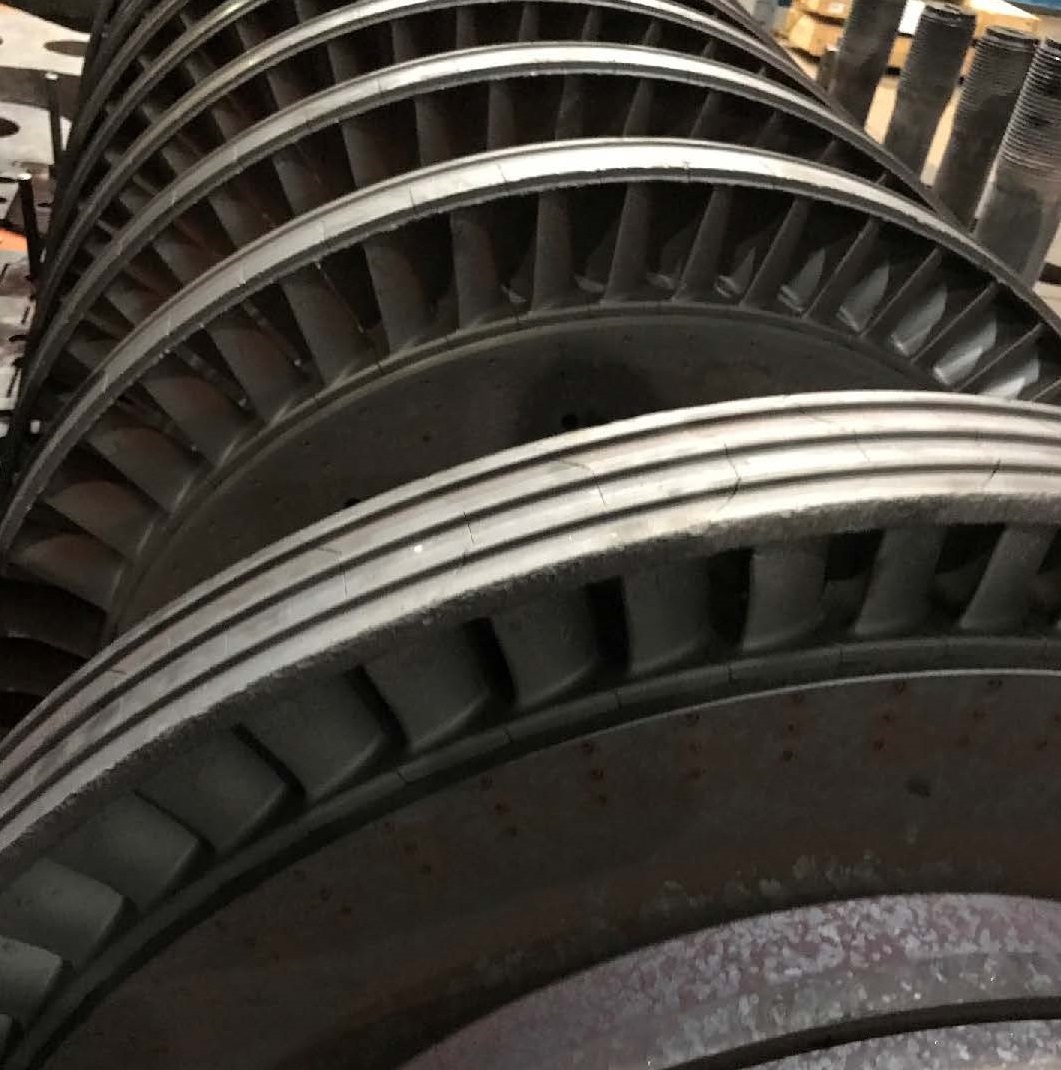
Power Services Group brings you a wide range of services specific to industries like yours, offering exceptional value and responsiveness. We can hit the ground running and deliver results so you can have peace of mind and your equipment is always available.
125 SW 3rd Place, Suite 300
Cape Coral, FL 33991
Phone: (800) 226-7557
